Urbex: Mastering Light and Composition
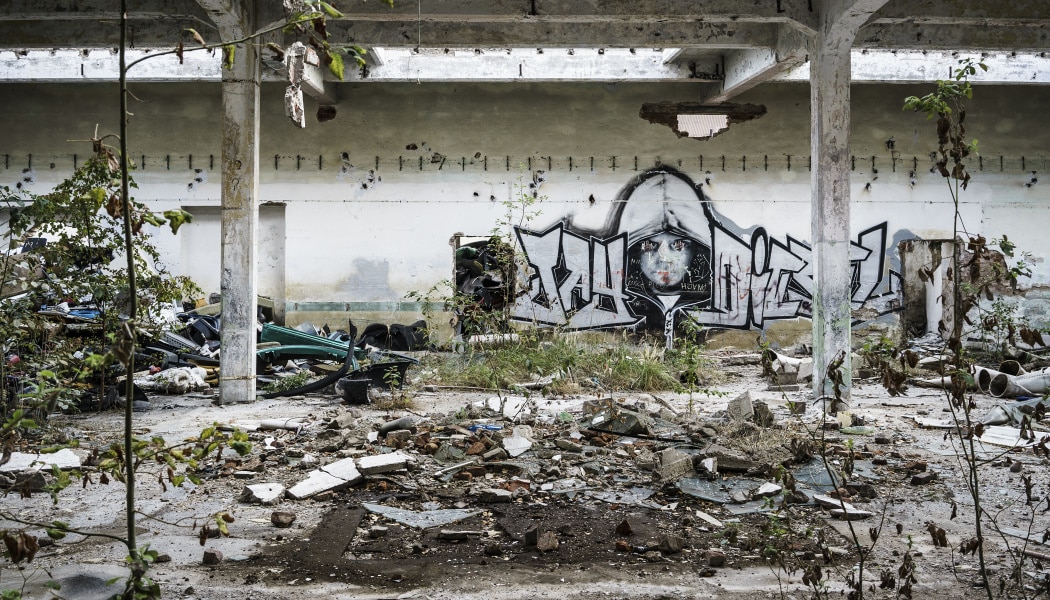
Urbex means exploring abandoned places, and photography fits into it perfectly. Meanwhile, photographing abandoned places isn’t all that different from photographing architecture or landscapes. The scene is static, and so you have to work hard with composition and light to underscore the place’s atmosphere and produce a gripping picture. We’ll show you how to do it.
The giant halls of old industrial buildings are astonishing in their emptiness. You’ll usually find rows of pillars that stretch from one end of a long hall into another and form pretty guidelines. Take a moment to observe how they converge at a certain point and how they can express the place’s enormity and loneliness in your photos.
Try to also find some object (a chair, an old cabinet, or even a person) that, when you place it right, will show the scale.
Work in Striking Objects
Abandoned objects—pieces of furniture, machines, and other objects—are one frequent motif in urbex photography. And yet at the same time, abandoned buildings’ environments are often cluttered with junk—overrun with shrubs, and with stuff piled up overall.
If your focus is on a specific object, try to place it more in the foreground and compose it onto a golden crop point. That way, your viewers will immediately know where to look.
A small depth of field will help you too. And also, try to find an angle of view where a simple, solid background with one set of colors lies behind the object.
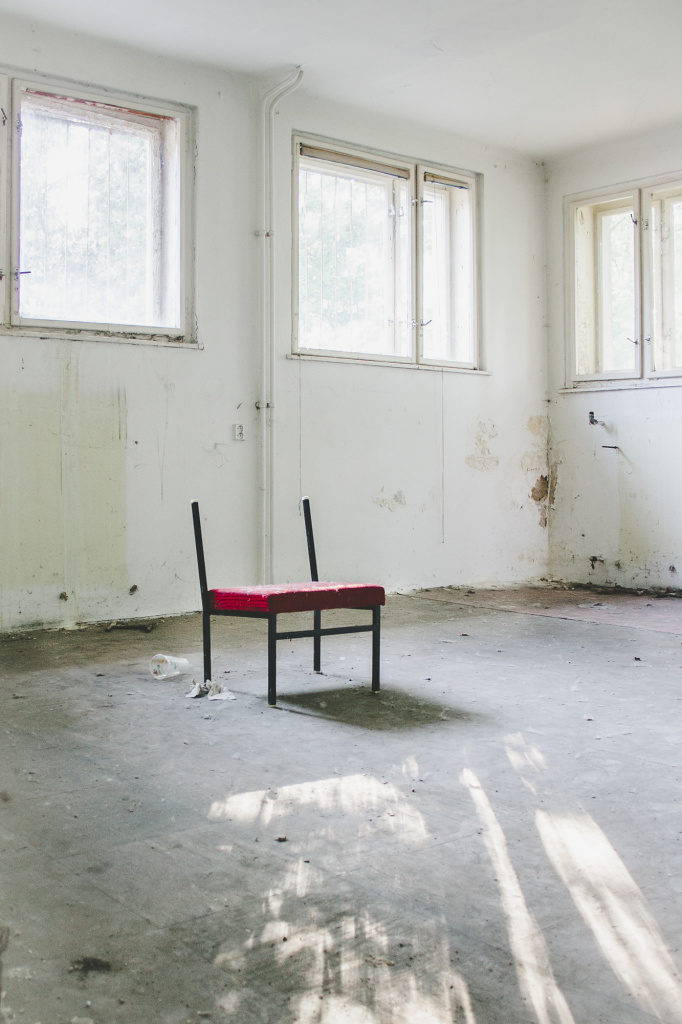
Canon EOS 1000D, EF-S 18-55 mm f3.5-5.6, 1/25 s, f/3.5, ISO 400, focal length 18mm
For Small Rooms, Use Wide Angles
Urbex does not live on factory halls alone. Tiny rooms in abandoned villas can be just as picturesque and interesting.
But without a wide-angle lens, you’ll be limited to just close-ups. With a wide-angle lens, you can view a small room using a new perspective that the ordinary human eye can’t see.
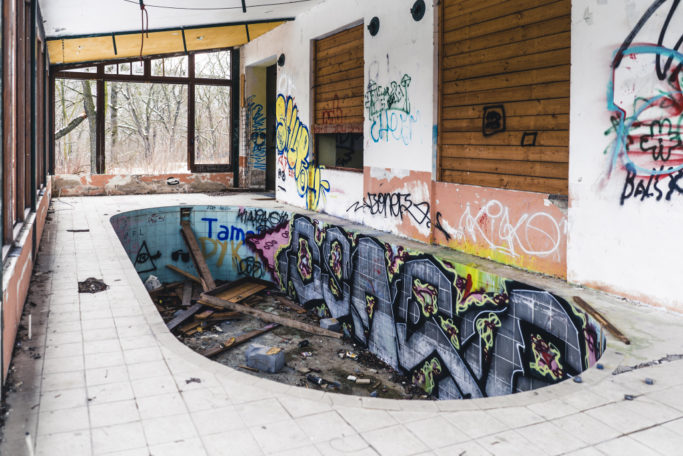
Sony A7, FE 28 mm F2, 1/100 s, f/2.8, ISO 100, focal length 28 mm
Through the Looking Glass
Try creating images within images. Broken windows can serve as openings into “other” worlds, and so can broken walls.
That lets you frame whatever has interested you in the abandoned room, while also making the picture feel more 3-D.
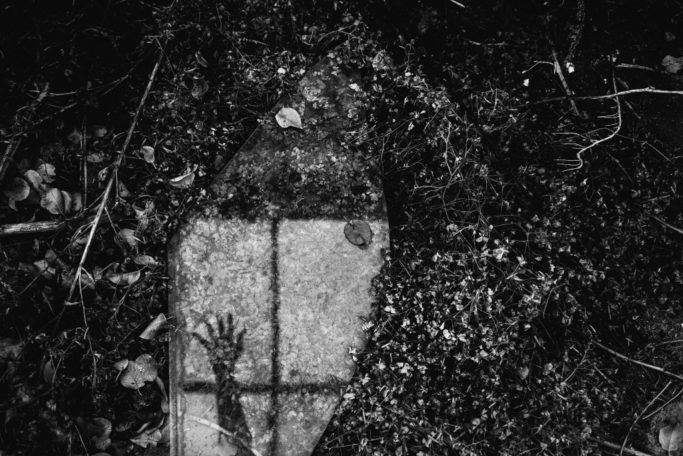
Sony A7, FE 35mm f/2,8 ZA Sonnar T, 1/125 s, f/2.8, ISO 100, focal length 35 mm
Repetitions and Their Interruptions
Rows of windows, columns, regular textures from peeling plaster or paint, or regularly arranged empty shelves create repeating patterns that the human eye loves. You’ll definitely encounter all this during your work with abandoned rooms.
What’s even more interesting is when you find an element that interrupts this regularity—an alarm clock on otherwise empty shelves, or a window covered with a cloth. Elements like these are sure to catch attention quickly.
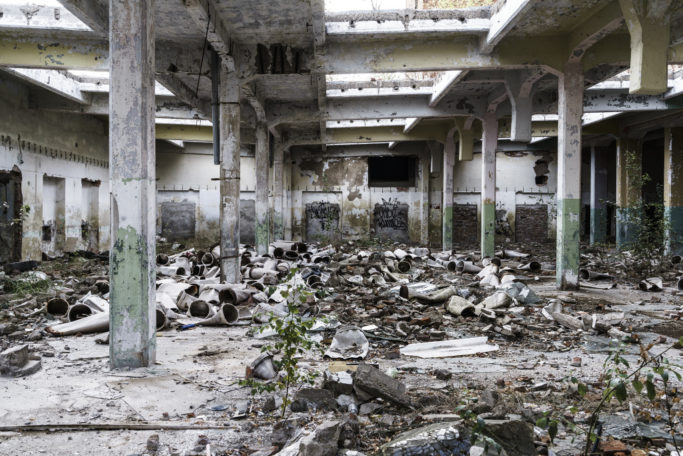
Sony A7, FE 35mm f/2,8 ZA Sonnar T, 1/100 s, f/8, ISO 400, focal length 35 mm
A Photo Below a Cone of Light
In the evening or morning hours when the sun is still low above the horizon, a beautiful sun ray can come in through a window or a broken roof. Check to see if there are any good places or objects to photograph lying in its light.
You can also make the ray more visible by stirring up the dust in the room (which often just requires walking through it). Cones of light breaking through into the building are visually interesting in their own right and can help to portray the photo’s enchanting atmosphere.
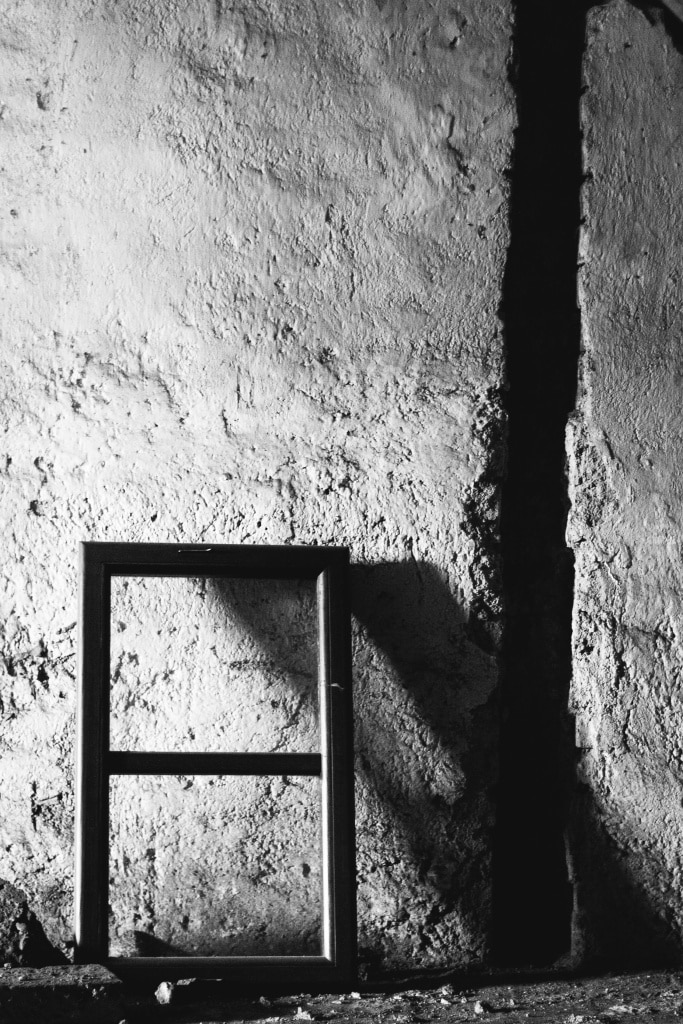
Canon EOS 1000D, EF 50mm f/1.8 II, 1/50 s, f/1.8, ISO 400, focal length 50 mm
Try Bracketing
The scenes that you photograph in abandoned buildings can sometimes have difficult light. Dark corners on the one hand, sharp light pouring in through holes from the outside on the other. To wrestle with this, use bracketing.
Bracketing is a camera function that lets you automatically take several pictures with different exposure levels in a row. You can then join these individual shots on a PC into an HDR photo—one with high dynamic range.

Sony A7, FE 35mm f/2,8 ZA Sonnar T, 1/100 s, f/8, ISO 1000, focal length 35 mm
Fight the Darkness With a Tripod and a Lamp
Sometimes abandoned buildings are just very dark. Dark all day, or dark because you chose to go there at night. And that’s definitely worth it—in the dark, buildings have an even more mysterious feel, sometimes even a feel of horror.
But you definitely can’t get by in these conditions without a tripod, and in many cases not without an external light source either. What’s often more interesting here than a flash is to use a lamp. (Try experimenting with various light sources with different intensities.)
A tripod, meanwhile, will let you use longer exposure times.
In any case, you don’t have to worry when you’re photographing abandoned places. They won’t run away from you. Absorb the atmosphere, take a good look around, and find what you enjoy there the most. Think over how it makes you feel, find something that could express that feeling, and use it for your photos.